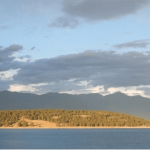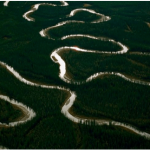A West Kootenay Welcome to CABIN
Located in the Southern interior of British Columbia, the West Kootenay region is a unique place. Visitors around the world seek its wilderness, solitude and eclectic small towns nestled in narrow mountain valleys with large, deep mountain lakes and rushing, steep wild rivers. Living Lakes Canada is fortunate to call the West Kootenay home.
This summer, I completed my Train-the-Trainer certification and joined Living Lakes Canada’s team of trainers qualified to deliver the two-day CABIN protocol (Canadian Aquatic Biomonitoring Network) Field Practicum on behalf of Environment Canada. With my new certification under my belt, I took to local streams in Nelson, British Columbia to train community stewards and professionals to monitor the water central to their lives.
Living Lakes Canada has been monitoring water quality using Environment Canada’s CABIN protocol across British Columbia and Alberta since 2009, and will expand into Manitoba this year. The national CABIN protocol uses benthic macro-invertebrates, along with physical and chemical data to assess ecological stream health.
The CABIN protocol is ideal for stewardship groups—required equipment is minimal and the protocol is straightforward and time efficient. Because the protocol is so widely used by government, industry and other Canadian water professionals, the data we train stewardship groups to collect becomes part of a large database of information containing not only their data, but also data gathered by other groups and professionals all across the country. This user-friendly CABIN database not only provides handy data storage and management, but also provides analytical and reporting tools.
After multiple site reconnaissance trips in search of the perfect site—a great riffle to collect bugs, a place with minimal mosquitoes, a stream bank that could be easily accessed (I currently have a broken leg!) and close proximity to Nelson —field sites were chosen at Cottonwood Creek, Anderson Creek and Kokanee Creek Provincial Park. At the park we were given an introduction to the creek and watershed by Naturalist, Joanne Siderius, and learned about the importance of salmon in traditional and current aboriginal culture by Park Wildlife Technician, Toni Appleby.
With our heads down in the stream, checking out the bugs, taking water samples and measuring the riverbed rocks, the traditional ecological knowledge shared by Toni provided a balance to the scientific CABIN protocol, a reminder that in order for the entire watershed ecosystem to function, everything must play its role, from bugs, to salmon, to humans. Incorporating traditional knowledge with modern scientific protocols, cumulative effects and holistic watershed management practices enhances the efficiency and effectiveness of broad-scale watershed scope studies.
As we were welcomed, and in turn welcomed others, to our local west Kootenay streams, we completed CABIN certification for eight community water stewards and two professional participants, who are now ready to get out into their watershed and help build knowledge and watershed health across the Columbia Basin.
By Raegan Mallinson, Water Stewardship Coordinator
Nelson 2015 CABIN Participants





